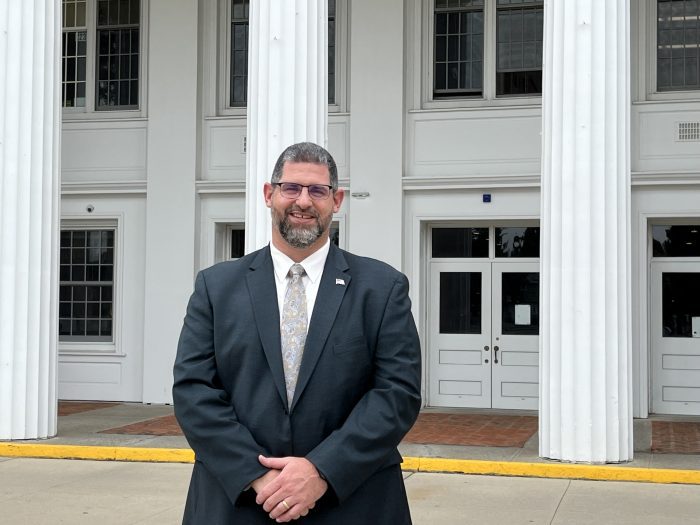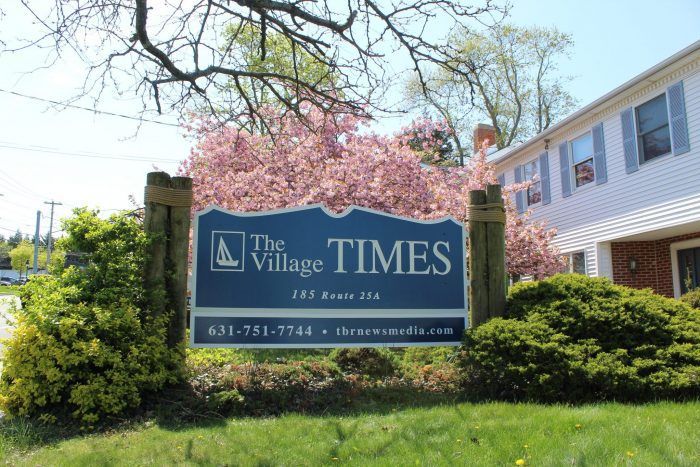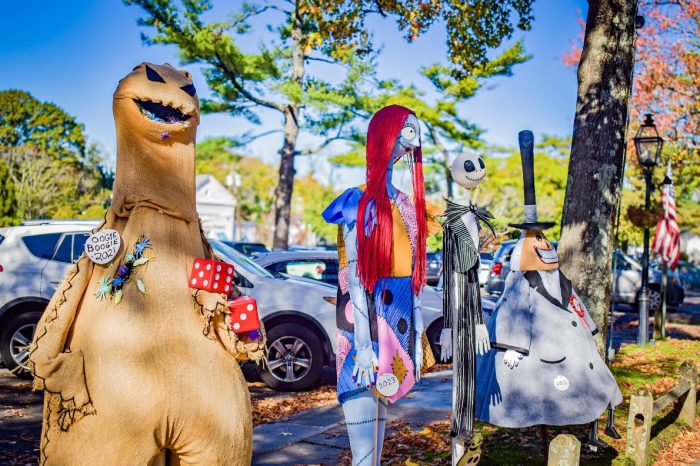By Mallie Jane Kim
For Ward Melville High School’s new principal John Holownia, the first week of the 2024-25 school year has been a bit surreal — he grew up attending Three Village schools and graduated from Ward Melville in 1999.
“It has been fantastic,” he said. “It’s not something I ever imagined when I was a high school student walking around the hallways.”
Holownia returns to his old stomping grounds after serving as an assistant principal at Shoreham-Wading River High School since 2019, and before that as a special education teacher in the Comsewogue school district.
It’s not his first time returning to his home turf, he said, as he coached football at Ward Melville for a few years as a young adult in the early 2000s after earning his bachelor’s degree in English literature from Princeton University. Returning mid-career as the high school principal, though, is a whole different ball game.
“My biggest priority right now is to just learn,” Holownia said, pointing to the high school’s reputation for excellence and his desire to keep it that way. “The most important thing I can do is learn how things work here and how things have been done in the past, and get a real feel for what has made Ward Melville such a successful place.”
Holownia replaces acting principal Paul Gold, an assistant principal who stepped in last November after the previous principal, William Bernhard, was reassigned. Gold has since retired.
Superintendent of Schools Kevin Scanlon, who was a social studies teacher at the high school during the years Holownia attended, said he looks forward to the new principal’s successful administration.
“John will be a tremendous asset to Ward Melville High School,” Scanlon said in an email.
Holownia is already thinking ahead to the structural changes the district has planned for 2025-26. The plan is for sixth grade to move up from the elementary schools into the junior high schools, and for ninth grade to move into Ward Melville, making it a four-year high school.
District staff and administrators have been working out over the past year the adjustments and structural modifications necessary for the high school to accommodate adding an academic grade level.
“Certainly that’s going to need to be well-coordinated,” Holownia said. “We’ll be putting all those programs and things in place to make sure we’re ready for that change.”
But for now, he’s focused on acclimating to the current set of students under his purview.
Three Village Board of Education officially appointed Holownia to his position April 3, and he’s been working in the building since July 1. He has enjoyed seeing staff and students filling the corridors after a quiet summer of preparation, he said.
“The energy in the building really comes from the kids,” Holownia said. “It’s been exciting, and definitely a great start to the year.”



































